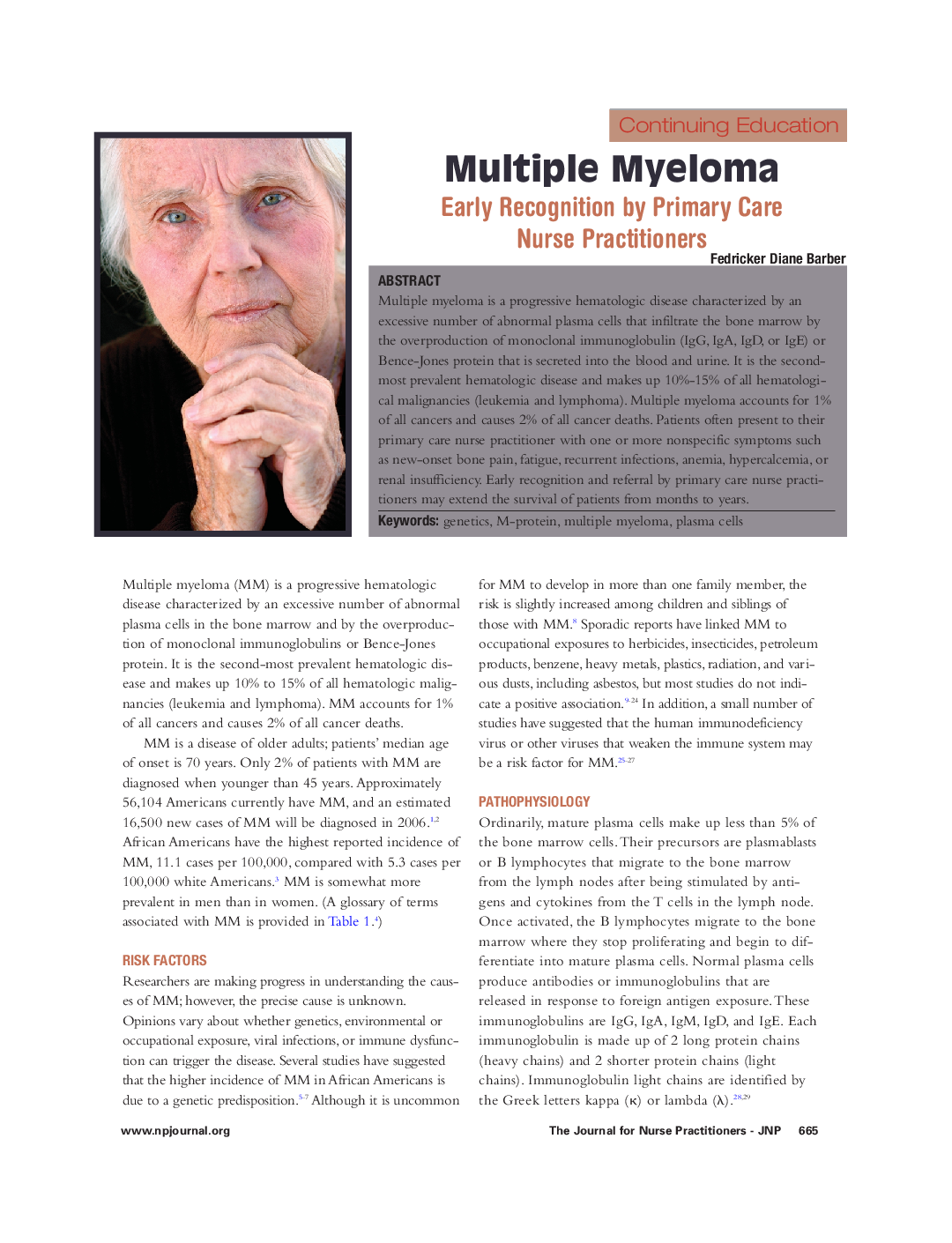| Article ID | Journal | Published Year | Pages | File Type |
|---|---|---|---|---|
| 2663126 | The Journal for Nurse Practitioners | 2006 | 8 Pages |
Multiple myeloma is a progressive hematologic disease characterized by an excessive number of abnormal plasma cells that infiltrate the bone marrow by the overproduction of monoclonal immunoglobulin (IgG, IgA, IgD, or IgE) or Bence-Jones protein that is secreted into the blood and urine. It is the second-most prevalent hematologic disease and makes up 10%-15% of all hematological malignancies (leukemia and lymphoma). Multiple myeloma accounts for 1% of all cancers and causes 2% of all cancer deaths. Patients often present to their primary care nurse practitioner with one or more nonspecific symptoms such as new-onset bone pain, fatigue, recurrent infections, anemia, hypercalcemia, or renal insufficiency. Early recognition and referral by primary care nurse practitioners may extend the survival of patients from months to years.
